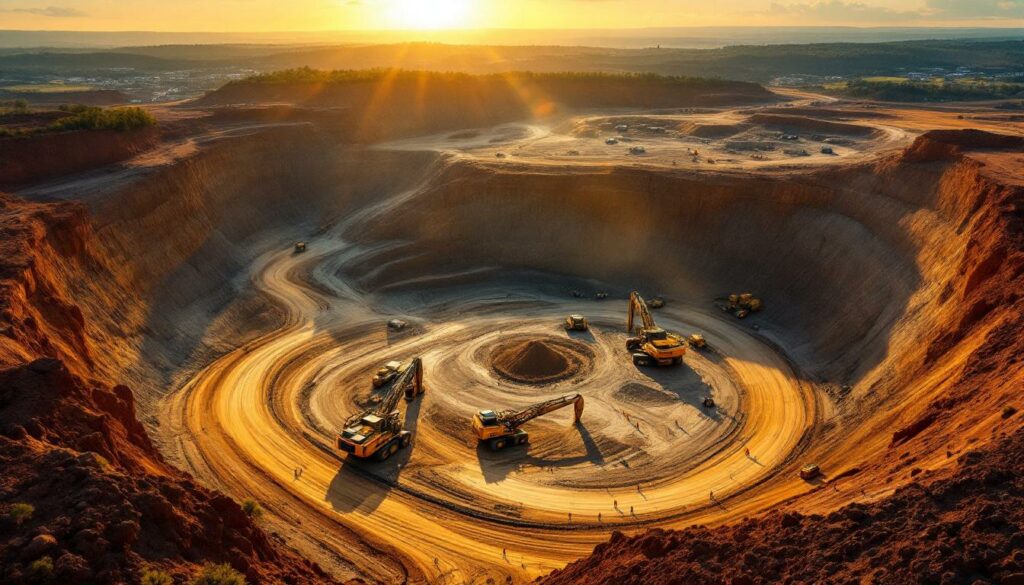What is Victoria's Proposed Mining Fee Increase?
Understanding the Scale of the Proposed Changes
The Victorian government recently announced plans to drastically increase fees for mining and extractive operations statewide, proposing a significant hike of about 234%, according to Shadow Minister for Resources, David Davis. If implemented, this fee surge would rank Victoria's costs as the highest in Australia, far surpassing comparable rates in traditional mining leaders such as Western Australia and Queensland.
Experts within the mining industry have raised alarms, noting that these fees could severely impact competitiveness and investment opportunities in exploration initiatives, particularly in gold and critical minerals. Currently, Victoria's mining fees are relatively aligned with other Australian states, but this sharp increase could tilt the state's regulatory environment unfavorably.
How the New Fee Structure Compares Nationally
When compared on a national scale, Victoria's proposed new structure would make it the most expensive jurisdiction for mining activities. While detailed comparative figures are still pending official release, industry representatives highlight that current average fees in other states—such as approximately $25 per hectare annually in Western Australia—contrast markedly against the proposed ~$83 per hectare in Victoria.
| State | Average Annual Mining Fees (per hectare) |
|---|---|
| Victoria (New) | ~$83 (proposed) |
| Western Australia | ~$25 |
| Queensland | ~$27 |
| New South Wales | ~$30 |
Figures approximate, based on most recent available industry data.
Why is the Mining Industry Opposing These Changes?
Economic Impact on Exploration Activities
The Minerals Council of Australia (MCA) has explicitly voiced concerns regarding exploration investment. MCA Victoria's Executive Director, James Sorahan, succinctly summarized the industry's apprehension:
"Every dollar in government fees, charges, and taxes is a dollar less put into the ground in exploration."
The mining sector perceives the proposed fee increase as a direct impediment to attracting exploration investment. Reduced mineral exploration insights could slow down future mining projects and negatively affect the discovery and extraction of resources, such as critical minerals necessary for renewable technologies.
Threat to Critical Minerals Development
Industry specialists emphasize that, despite recent pushes towards a sustainable and renewables-heavy economy, Victoria risks contradicting its own strategic vision. Mining exploration for critical minerals insights—lithium, cobalt, or rare earth elements—is vital for manufacturing batteries and renewable energy equipment, and reducing exploration incentives could harm this strategic goal.
With Victoria's gold production already facing a decline, further government-induced barriers may stagnate mineral development at precisely the moment new investment is critical. Current gold prices analysis suggests the timing is particularly unfortunate for such regulatory changes.
Investment Flight Concerns
Further adding to industry anxieties, mining executives and representatives assert that increasing Victoria's operational expenses will drive mining companies to jurisdictions offering more favorable regulatory environments. According to a recent analysis by Mining News, a significant withdrawal of investment capital could follow this decision, hurting Victoria yet benefiting neighboring states with lower operational overheads and fees.
How Would These Fees Affect Victoria's Economy?
Impact on Housing and Construction Costs
Shadow Minister David Davis highlights a less intuitive yet significant economic consequence—the inevitable ripple effect on housing affordability:
"Extractive industries are direct inputs to housing costs; why increase them by 234% in a housing crisis?"
Indeed, mined materials—such as sand, gravel, and stone—are foundational inputs in construction. Dramatically increasing mining fees will consequently raise the cost of these compulsory materials, passing expenses directly down to consumers through increased home-building costs.
Broader Economic Ripple Effects
Higher operational costs mean fewer projects can be justified economically. On a community scale, this could lead to job cuts, reduced regional economic growth, and a deterioration of local supply chains. Historically, towns like Ballarat and Bendigo have relied heavily on mining activities; investment migration could harshly impact these local economies, reversing years of development and growth.
Competitive Disadvantage in Attracting Investment
Victoria's mining competitiveness, relative to other Australian states, hinges heavily on maintaining comparatively manageable operational costs. Imposing proposed fee increases places Victoria on precarious ground:
- Companies exploring new projects might shift investments to states with stable or lower fees.
- Long-term revenue potential could weaken significantly if Victoria's mining industry shrinks dramatically.
What is the Government's Rationale for the Increase?
Cost Recovery Justification
The Victorian government frames these proposed increases mainly as a strategy of "cost recovery", suggesting current fees fall short of covering administrative and regulatory operational expenses tied to mining oversight. As outlined on the Victorian government's engagement portal, many governments argue that operational fee structures should align appropriately with the real administrative burdens presented by industry growth and changes in regulatory complexity.
Revenue Generation in a Challenging Fiscal Environment
However, critics view the plans skeptically, connecting them to a broader trend of revenue-raising initiatives by the Victorian government. Shadow Minister Davis asserts that the current government has enacted "more than 60 new or increased taxes" since assuming office in 2014, characterizing this move as embedded in a larger "tax binge."
Regulatory Framework Changes
The Victorian government may also parallel these fee increases with new regulatory expectations. Yet, full details regarding additional regulatory changes alongside the fee structure increase remain unclear.
How Does This Fit Into Victoria's Broader Tax Policy?
Pattern of Tax and Fee Increases
Seen within a broader interpretation, Victoria's proposed fees fit into a continual pattern of increased taxation under the current state government. Independent bodies reflecting industry sentiments, such as the Business Council of Australia, suggest repeated taxation and regulatory tightening could undermine the region's attractiveness to investors.
What Alternatives Could Address Both Sides' Concerns?
Graduated Fee Structure Options
An incremental fee increase structured in tiers—based on company size, revenue, or production—could serve as an equitable compromise. Such structures, successfully implemented in states like South Australia, ensure small-to-medium operations are not disproportionately impacted.
Performance-Based Fee Reductions
Introducing incentives allowing fee discounts for mining companies excelling in environmental stewardship, local employment generation, or community engagement holds possibilities for mutual benefit—promoting best practices while achieving necessary revenue benchmarks.
Consultation and Phased Implementation
Industry stakeholders frequently criticize rapid policy changes implemented without adequate consultation or phase-in periods. Opting for gradual implementation, coupled with an ongoing industry-government discourse, would permit companies ample preparation time, reducing economic shock and sectoral instability. Understanding mining permits essentials would be crucial for companies navigating this changing regulatory landscape.
FAQ: Victoria's Mining Fee Increase
When would the proposed mining fee increases take effect?
Currently, the exact timeline remains undefined; the government has yet to provide concrete implementation dates, although active discussions suggest potential enactment during late 2025.
How do Victoria's current mining fees compare to other states?
Victoria's existing fee structure aligns more closely with other states; however, the proposed increase would clearly position the state as Australia's mining cost leader.
Would all types of mining operations face the same percentage increase?
Specific variances have not yet been publicly detailed, though the cited 234% increase applies broadly across the industry according to initial dialogue from authorities and opposition leadership.
What specific mining activities would be most affected by these increases?
Significant impacts are anticipated for gold mining and critical mineral explorations, sectors already vulnerable to market fluctuations and ongoing regulatory uncertainty.
How might these fee increases affect mining employment in Victoria?
While precise employment impact studies remain forthcoming, investment recessions tied to increased operational costs might substantially impact employment within mining-dependent communities.
Further Exploration:
For deeper understanding and more comprehensive coverage regarding the mining industry and broader implications of Victoria's proposed fee increase, industry reports such as the Minerals Council of Australia's annual publications and government policy outlines are highly beneficial resources.
Want to Stay Ahead of Major Mineral Discoveries?
Discovery Alert's proprietary Discovery IQ model delivers instant notifications about significant ASX mineral discoveries, giving you actionable insights before the broader market. Find out how historic discoveries have generated exceptional returns by visiting the dedicated discoveries page and start your 30-day free trial today.




